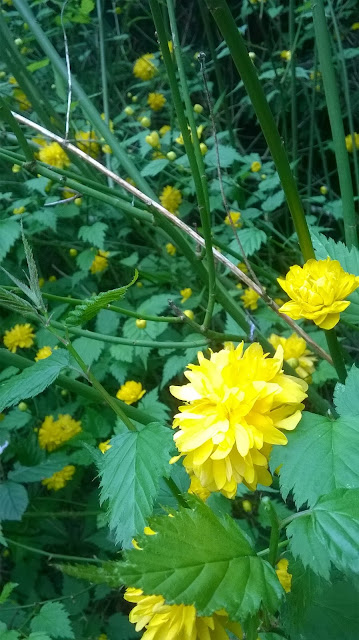Origins
The Choisya Ternata commonly known as The Mexican Orange is an evergreen shrub which is native through much of Mexico and up into some of the Southern States of North America. It is named in honour of the Swiss clergyman and botanist Jacques Denys Choisy (1799-1859). Breeders have created several different varieties some of which are usually available in nurseries and garden centres
Growing Habit
Choisya ternata is a bushy evergreen shrub which is grown as much for its glossy green aromatic foliage as they are for its scented white flowers which are glorious in late April through May. It is not unusual for them to have a second flush of flowers in the Autumn. Without pruning Choisya Ternata can grow up to 2.5 metres (8 feet) wide and 2.0 metres (6.5 feet) high, but growing habit does somewhat depend on the particular variety. Popular choices in Britain include Choisya Ternata 'Sundance' which has brighter yellow leaves and Choisya Dewitteana which has narrow leaves and is more compact. Choisya's can be planted as an informal hedge
 |
Planting & Pruning
Probably the best time to plant Choisya is in the early Spring but if purchased in a pot you can plant at any time of the year. Take special care in Winter making sure the soil is frost-free and in Summer that there is some moisture in the ground. Dig a hole twice the size of the pot and add in a general purpose compost and a handful of fish blood and bone or similar fertilizer. Water thoroughly especially during the summer months and continue until you are confident the plant is established. There is really very little pruning required except to keep your shrub in shape. This is of course more important if you have planted an informal hedge. As with most shrubs prune after flowering has finished usually in June. Where Winters are hard with snow Choisya can look a bit jaded and bare patches can develop. Cut out all the dead and poor branches in early Spring to encourage new growth but do not cut back hard the entire shrub otherwise, you will miss out on the year's flowers
CLICK VITAMINS, MINERALS, & SUPPLEMENTS from AMAZON HERE General views and discussion are welcome, please say hello. I regret due to my busy schedule I am unable to answer your questions. I receive a small commission from commercial links on this site. Please consider visiting my affiliate and Amazon associate links to help me produce this blog. Thanks for visiting Life Between the Flowers today, hope you will visit me again soon.












